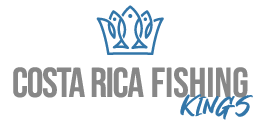Fishing in Costa Rica offers something for anglers of all experiences from beginners to professionals. The Central Pacific is well-known for the extensive abundance of large game fish. Among the primary fish species that many anglers fish for in this area includes Yellowfin Tuna.
Here are a few handy tips you should know about when it comes to Yellowfin Tuna fishing in Costa Rica.
To start with here is a bit of background information about this prized fish.
Yellowfin Tuna is a common fish that is found in tropical warm waters across the globe, and the Central Pacific coast of Costa Rica is definitely no exception. In fact, Yellowfin Tuna is among the most commonly hooked fish in Costa Rica.
While you may have heard rumors that Yellowfin Tuna is one of the easier fish to catch, this might be true for the smaller sized Yellowfin Tuna. However, the large ones are hard fighting and hard-hitting fish, and even the small to medium-sized ones are known for pulling hard despite their size. You will need a bit of patience and perseverance when it comes to catching this species.
There are different techniques that you can use when you go fishing for Yellowfin Tuna, from using various types of baits and lures to different types of trolling tactics. It is important to keep in mind that Yellowfin Tuna is one of the surface feeders, which means that a surface water technique is usually the best approach.
When it comes to bait, many of the charter boats in Costa Rica are known for going with anchovies and sardines. However, when one of these fishing charters comes across large schools of Skipjack Tuna, Tuna or/and Pacific Mackerel will also be used. When it comes to your trolling tack, cedar plugs, tuna feathers, and plastic-skirted trolling lures are what will attract the attention of Yellowfin Tuna.
You need the correct tackle before you start fishing in Quepos or Los Suenos for Yellowfin Tuna. You should be choosing your tackle according to the fish size that you are hoping to land. If you are going after the large schools make sure you invest in heavy gear along with tackle around the 100-pound range. For the smaller schools, a setup of tackle in the 15-pound range should be more than enough.
Top-Rated Launch Points For Yellowfin Tuna Fishing In Costa Rica
The best marinas to fish from on Costa Rica’s Pacific coast would be Quepos or Los Suenos. These marinas are well-equipped launch points along with the most top-shelf charter boats for fishing in the area.
From Quepos and Los Suenos marinas, you have easy access to Costa Rica’s Seamounts along with a few fantastic FAD fishing locations. These areas provide an abundance of Yellowfin Tuna, along with Sailfish and Marlin.
If you are interested in booking one of the charter boars from Quepos or Los Suenos marinas, contact us at Costa Rica Fishing. We have more than 10 years of experience when it comes to sportfishing and helping our customers to take advantage of the best fishing spots in Costa Rica. We ensure you have everything that you need from equipment to assistance to make sure you catch the type of fish you are interested in. Some of the species that are popular in this area include Rooster-Fish, Red Snapper, Sailfish, Marlin, and Yellowfin Tuna.
Costa Rica’s Tuna Fishing Season
As we mentioned before, Tuna is a type of fish that you can catch throughout the year (it is even accidentally caught quite frequently while targeting the trophy species such as Sailfish or Marlin). It is also common to hook “footballs” ( the common name for 10-20lb Tuna), all year round. However, there is also a specific season when it comes to Tuna fishing in Costa Rica, which is different from Tuna Seasons in the neighboring countries of Nicaragua and Panama.
In Costa Rica, fishing for tuna is at its best from May to November. This is when you increase your chances of successfully hooking bigger Tuna, in larger numbers. Although not very common, the specimens between 200 and 300 pounds have been hooked between these months from our boats. We also have days where it is easy to land 10 to 20 Tuna within the first few hours when it is peak Tuna season.
